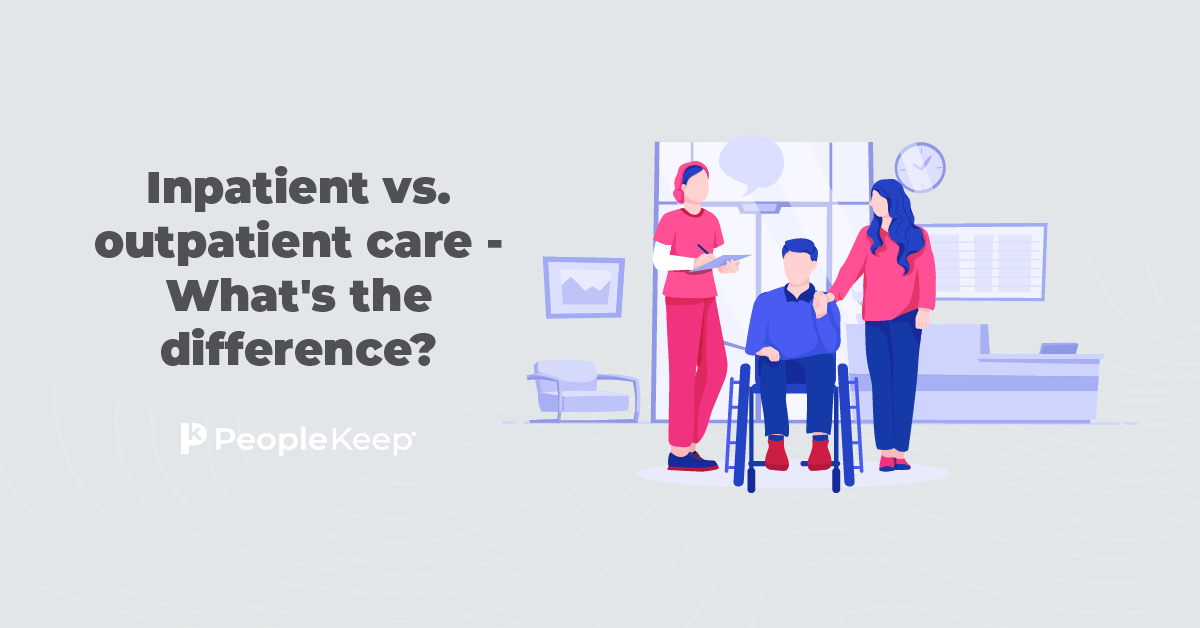What does health insurance cover?
By Elizabeth Walker on October 31, 2025 at 10:00 AM
Healthcare in the United States can be expensive. Without insurance, fixing a broken leg can cost up to $7,500, and an average three-day hospital stay can be as much as $30,0001. This is why having a health insurance policy is critical. According to the U.S. Census Bureau, 92% of all Americans in 2024 had some form of health insurance coverage2.
But simply having health insurance doesn’t solve everything. There are always services and procedures your plan may not cover, which can leave you with costly medical bills, especially if you have a chronic condition.
This article will go over what health insurance does and doesn’t cover so that you can plan your finances ahead of time.
In this blog post, you’ll learn:
- What health insurance typically covers, including the ten essential health benefits.
- Which healthcare services aren’t usually covered, and why insurers exclude them.
- How employers can fill coverage gaps with benefits like health reimbursement arrangements (HRAs).
What does health insurance cover?
The services a health insurance plan covers differ depending on the type of policy. But there are some standard parameters that most plans must follow.
Before the Affordable Care Act (ACA), health insurance providers on the individual market could exclude certain medical services from their medical policies. Benefits could vary from plan to plan, leaving consumers unclear on what to expect when switching from one policy to another. Traditional group health coverage also differed by plan type and employer.
Today, all individual and small group plans sold on public health exchanges, such as the federal Health Insurance Marketplace and state-based marketplaces, must cover the ten essential health benefits.
Essential benefits include:
- Preventive care services
- Hospitalization and emergency services
- Mental health services, including substance use disorder services
- Prescription drug coverage for both generic and brand-name medications
- Rehabilitative and habilitative services, including related medical equipment
- Laboratory services, including lab tests needed for a diagnosis
- Pregnancy, maternity, and newborn care, including birth control and breastfeeding services
Outside of the ACA’s essential benefits, what else a Marketplace plan may cover can vary by state. This means your health plan may cover different services than another similar type of plan in a different location. Additionally, employer-sponsored, large group health plans aren’t required to cover essential health benefits (except for certain preventive care). However, most employer-sponsored group plans provide comprehensive medical coverage.
You’ll likely have a deductible with your insurance plan. This is what you must pay out-of-pocket before the plan covers medical expenses (with the exception of preventive care). Once your insurance coverage kicks in, it will likely only cover a set percentage of covered expenses.
When you reach your policy’s annual out-of-pocket limit, your insurer will cover 100% of covered costs for the rest of the plan year. Additionally, if your plan covers essential health benefits, a health insurer can’t limit the total amount they’ll spend on medical care for essential benefits throughout your life.
If you’re age 65 and older or have a qualifying disability, you may have health coverage through the federal Medicare program.
Below are what each part of Medicare covers:
- Medicare Part A covers hospital care, including inpatient services, hospice care, and certain home healthcare services.
- Medicare Part B covers outpatient medical services, including preventive care, clinical research, and mental health services.
- Medicare Part C, also known as a Medicare Advantage plan. Part C includes everything that Parts A and B cover. In some cases, it can also include Part D benefits.
- Medicare Part D provides optional prescription drug coverage.
What doesn’t health insurance cover?
While your health plan may cover many medical services, there’s no rule that it must pay for everything. Your health insurer determines which services it will cover based on the types of care most patients need and what it can offer while remaining profitable.
Understanding your policy details — including your deductible, coinsurance, and copayment amounts — will help you know how much you’ll pay out-of-pocket for medical care. It can also help you determine if you need to purchase a supplemental health plan.
Let’s look at four popular medical services that health plans don’t typically cover.
1. Adult dental and vision services
Under the Affordable Care Act, dental coverage is an essential health benefit for children. But adults aren’t so lucky. Some people previously had health, dental, and vision coverage bundled into one plan. But now, most medical insurance plans don’t cover dental or vision care for adults unless they state otherwise.
If you want dental or vision coverage, you’ll most likely have to buy ancillary coverage that includes one or both of these services. You can purchase a dental or vision plan on a public or private health exchange, such as directly from an insurance company or a broker. But before you buy a plan, know that they typically don’t have any out-of-pocket maximums.
Many employers may also offer dental and vision insurance as part of their employee benefits package to make their healthcare benefits more attractive.
2. Fertility treatment
Despite a growing need for fertility benefits, this type of care remains inaccessible to many. As of 2025, only 22 states and Washington, D.C. have fertility insurance coverage laws3. Most health insurance plans will cover infertility diagnostic testing. However, insurance companies typically only cover a limited range of fertility treatment services.
The quickest way to determine if your insurance plan covers fertility treatment services is by reviewing your health plan’s summary of benefits or calling your insurer. If your insurance policy excludes infertility treatment and all related services, it’s safe to assume it won’t cover any services you need for your treatment.
3. Weight loss surgery
Weight loss surgery, also known as bariatric surgery, is a type of surgery that can cause weight loss by restricting the amount of food your stomach can hold, resulting in weight loss. While this may be medically necessary for some, most standard health insurance plans don’t cover bariatric surgery procedures.
Access to this type of healthcare has improved over the years. However, surgical assistance for weight loss isn’t a standard form of care yet. This is because health insurers don’t consider bariatric surgery a necessary or life-saving treatment for most patients. Whether your health plan covers weight loss surgery will depend on your chosen plan and your insurance company.
4. Cosmetic procedures
Similar to weight loss surgery, many health insurance plans don’t cover cosmetic procedures. This is because these services are typically elective and don’t treat a specific health condition. However, if you can prove that the service is medically necessary, insurance may cover it.
These services may include:
- Rhinoplasty in the case of breathing difficulties
- Skin removal for chronic rashes or other illnesses
- Breast reconstruction for breast cancer patients
- LASIK eye surgery
Individuals should work with their physician and insurance provider to find out if their health plan covers the specific cosmetic procedure they need.
5. Non-traditional or alternative medicine
Many health insurance plans don’t cover alternative forms of medicine, such as acupuncture, herbal remedies, chiropractic care, or massage therapy.
Why doesn’t a health insurance plan pay for certain expenses?
In some cases, you may find that you were billed out-of-pocket for a prescription drug or health service you thought was a covered benefit. When an insurer denies a claim, it’s easy to get frustrated.
However, before making a phone call, check to see if one of the three common occurrences below is the reason your health plan won’t pay.
1. Your health plan doesn’t cover the service you need.
When a health plan denies a claim or refuses a prior authorization request because a service isn’t a covered benefit, it means your policy doesn’t cover that particular service, regardless of the circumstances.
If you think your health insurance company is wrong, check your policy details to confirm. If you have employer-sponsored health insurance, ask your company’s benefits specialist if it’s a covered service.
2. You got care from an out-of-network medical provider.
Individuals with a health maintenance organization (HMO) or exclusive provider organization (EPO) policy have limited coverage. With these types of plans, your insurer won’t pay the total bill — or may not pay at all— if you seek medical care from an out-of-network provider.
If you request prior authorization for an out-of-network provider and the insurer denies it, you can resubmit the request using an in-network medical provider instead.
However, if you’ve already received care and your health plan won't pay, you may have to prove that no in-network provider offered the service you needed to get your insurer to pay. You may also have luck if you needed emergency care and had to go to the nearest available provider for treatment.
3. Your health plan doesn’t think the service is medically necessary.
If your insurer refuses a claim or pre-authorization request due to medical necessity, they may not believe you need the specific healthcare you’re requesting and, therefore, won’t pay.
If you receive a medical necessity denial, you should ask your physician for help. Suppose your healthcare provider has recommended a specific prescription drug or medical service for a legitimate reason. In that case, they can send a letter of medical necessity explaining the situation to your insurer. The insurance carrier may approve the procedure or work with your physician to approve another, more reasonable approach.
How to cover excluded healthcare costs with other health benefits
Now that you understand more about health insurance, you may wonder how to get help covering any excluded medical costs. Let’s go over three options below.
Integrated HRA
If you have employer-sponsored group health insurance, an integrated HRA can help you pay for qualified out-of-pocket medical expenses that your group plan doesn't fully cover.
Also known as a group coverage HRA (GCHRA), integrated HRAs are tax-free health benefits for employers of all sizes that offer a group health policy. Like other HRAs, employers with a GCHRA provide their employees with a predetermined monthly allowance to spend on various out-of-pocket expenses. However, by law, group plan premiums are ineligible costs.
Once you make a purchase, you’ll submit proof to your employer or HRA administrator via a receipt or invoice. After your employer approves the expense, they’ll reimburse you tax-free up to your set monthly allowance amount. You can’t exceed your allowance once you reach it.
Unlike health savings accounts (HSAs), HRAs are employer-owned, meaning that unused HRA funds stay with the employer. Allowances roll over monthly, but typically don’t roll over annually. Additionally, only employees enrolled in their employer-sponsored group plan can participate in the GCHRA.
If your employer seeks feedback on their benefits package, see if they’d be willing to add a GCHRA to your benefits package to cover out-of-pocket expenses.
Stand-alone HRAs
If your employer doesn’t offer a group health plan or wants to cancel their group policy to save money, suggest that they look into a stand-alone HRA. These types of HRAs work similarly to the GCHRA. However, they don’t work alongside group health insurance.
With a stand-alone HRA, your employer gives you a tax-free monthly allowance, and you buy your own individual health insurance policy and other preferred medical services and items. Eligible expenses can even include individual health plan premiums. Like the GHCRA, once you make approved purchases, your employer reimburses you up to your set allowance limit.
There are two main types of stand-alone HRAs:
- The qualified small employer HRA (QSEHRA): A QSEHRA is a stand-alone HRA for organizations with fewer than 50 full-time equivalent employees (FTEs). The IRS sets maximum annual contribution limits; however, there are no minimum limits. Full-time W-2 employees are automatically eligible to participate in a QSEHRA as long as they have a health plan that provides minimum essential coverage (MEC).
- The individual coverage HRA (ICHRA): An ICHRA is another stand-alone HRA, but it’s available to employers of all sizes. Like the GCHRA, the ICHRA has no minimum or maximum contribution limits. You can opt in or out of an ICHRA, depending on affordability. However, if you opt in, you must have a qualifying form of individual health coverage to participate.
Health savings account (HSA)
A health savings account (HSA) is another useful way to manage out-of-pocket healthcare costs. With this special savings account, you can set aside pre-tax money to pay for qualified medical expenses. Many people believe they can only get an HSA through their employer. But this isn’t the case. To open and contribute to an HSA, all you need is an HSA-qualified high-deductible health plan (HDHP). Then an HSA provider can help you open an account.
You can use the money you contribute to an HSA to pay for a wide range of medical expenses outlined in IRS Publication 502, such as:
- Doctor visits
- Prescription drugs
- Dental and vision care
- Other qualified health services
Even if your employer does open and contribute to your HSA, the account always belongs to you. This means the balance stays with you even if you change jobs or insurance plans, and any unused funds roll over annually. Over time, this can help you build substantial savings for future healthcare expenses.
Conclusion
Understanding the ins and outs of health insurance in the United States can be challenging. While most health plans cover essential services, many don’t cover specialty services. If you don’t have enough out-of-pocket cash to pay for the healthcare you need, your plan may not provide enough coverage.
Fortunately, an HRA can help you pay for several healthcare services that your health plan may not cover. If your company is looking to refresh its benefits package and values employee input, point them toward a customized HRA. Ask your employer to schedule a call with one of our HRA specialists to learn more!
This article was originally published on April 6, 2022. It was last updated on October 31, 2025.
1. Why health insurance is important
Check out more resources
See these related articles

What employers need to know about HRA debit cards
Are you considering HRA debit cards for your workers? Find out why they may not be the best option for your company and what alternatives you can explore.

Inpatient vs. outpatient care - What's the difference?
Curious about the difference between inpatient and outpatient care? We break down the key distinctions to help you make informed healthcare decisions.

Can I have an HRA and an FSA at the same time?
Learn if you can have an HRA and an FSA at the same time. Understand the rules, benefits, and how these accounts can work together for healthcare costs.


